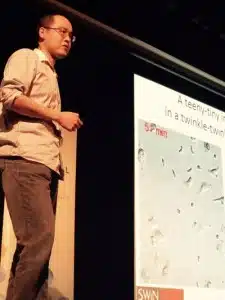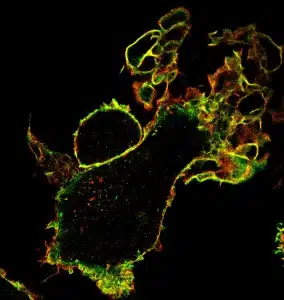Deciding who lives or dies—backing off may be key to immune cell choices.
Immune cells find infected or damaged cells with incredible speed and accuracy, and now Melbourne researchers are using powerful new imaging tools to discover uncovering exactly how they do it.
This work will provide insight into how autoimmune diseases develop and how early cancer cells escape detection by immune T cells.
“T cells are like airport security. They provide surveillance and check that no one is carrying anything dangerous,” explains Dr Ye Chen, a postdoctoral researcher at Swinburne University of Technology.
“We want to understand how the T cells decide what is dangerous, for example infected or cancerous cells, and what isn’t, like healthy cells.”
Using a cutting-edge microscopy method, Ye has been able to provide clearer pictures of the contact between cells, and is now unravelling how T cells decide which cells have been infected.
He has found that keeping the right distance is more important than we thought. “Surprisingly, sometimes this meant falling back a bit,” revels Ye. “It appears that the T cells hang around for longer than we thought and that they change their proximity depending on the cell.”
Ye presented his research at Fresh Science Victoria 2015.
Fresh Science is a national program that helps early-career researchers find and share their stories of discovery. Over 30 early-career researchers nominated for Fresh Science Victoria, which was held at Scienceworks (training), Melbourne Museum (schools forum) and the Kelvin Club (public challenge event).
Fresh Science Victoria was supported by Museum Victoria, Bio-Medical Research Victoria and the Office of the Victorian Lead Scientist.
Ye Chen, Swinburne University of Technology, yechen@swin.edu.au

Ye presenting at the schools forum






 Fresh Science is on hold for 2022. We will be back in 2023.
Fresh Science is on hold for 2022. We will be back in 2023.